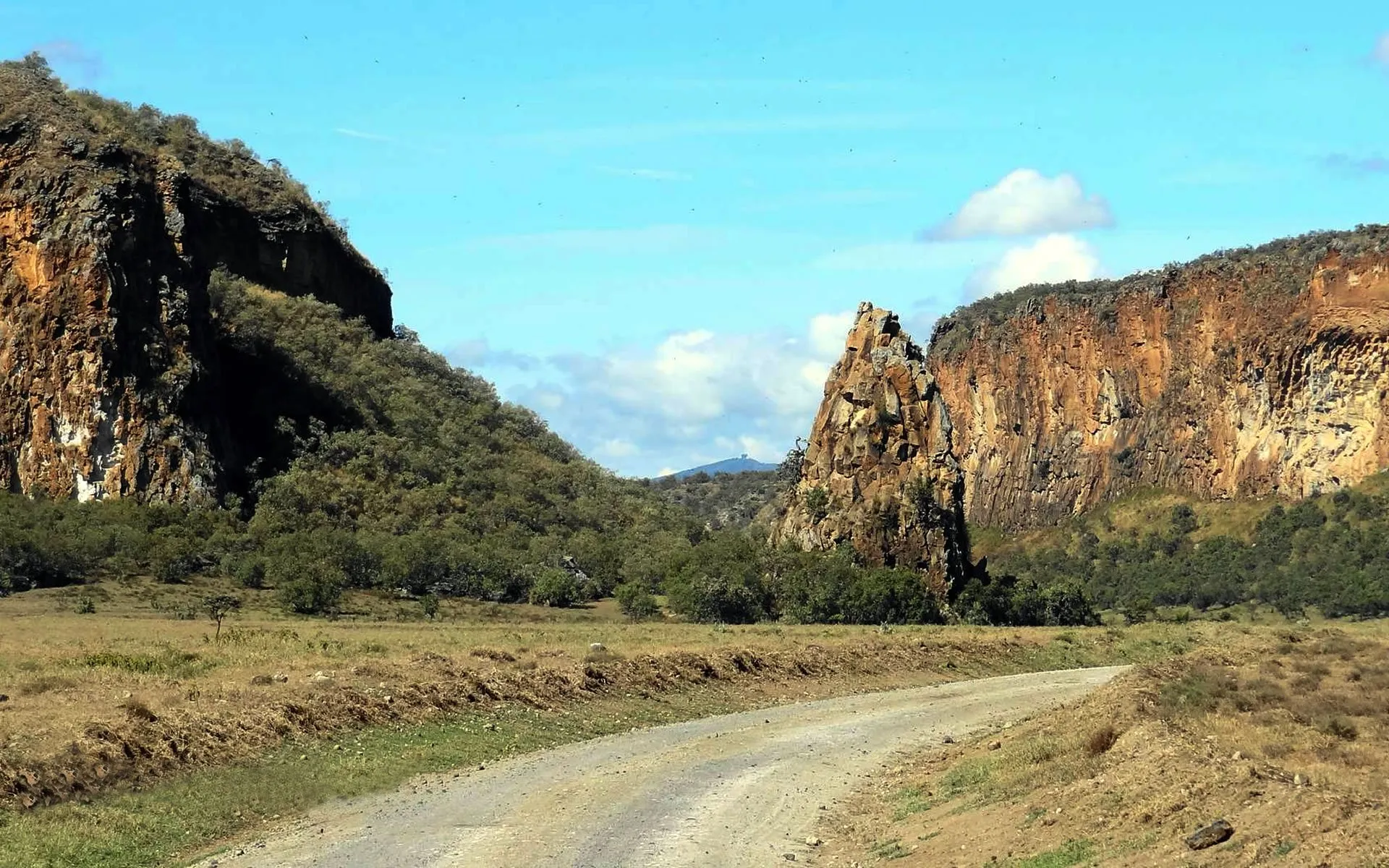Hells Gate National Park

Overview
Hell's Gate National Park, located approximately 100 kilometers northwest of Nairobi and south of Lake Naivasha, is a captivating destination known for its stunning landscapes, diverse wildlife, and unique geological features. Established in 1984, the park covers an area of 68.25 square kilometers and is named after a narrow gorge that resembles a gateway, which was once a tributary of a prehistoric lake.
Geological Features and Geothermal Activity
The park's landscape is characterized by dramatic volcanic formations, including towering cliffs, gorges, and remnants of ancient lava flows. Notable features include Fischer’s Tower and Central Tower, both volcanic plugs that add to the park's geological allure.
One of the most remarkable aspects of Hell's Gate is its geothermal activity. The park is one of the few national parks in the world with active geothermal features, including hot springs and natural geysers. Visitors can witness steam rising from vents in the ground, creating a unique and otherworldly atmosphere. The geothermal hot springs are not only visually striking but are also believed to have therapeutic properties, attracting visitors looking to relax and rejuvenate.
The Olkaria Geothermal Power Station, located within the park, is the first of its kind in Africa, established in 1981. It harnesses the geothermal energy from the area's hot springs and geysers, contributing significantly to Kenya's energy supply.
Wildlife
While Hell's Gate is not known for the "Big Five," it hosts a variety of wildlife, including zebras, giraffes, buffaloes, and various antelope species like hartebeests and Thomson's gazelles. The park is also a birdwatcher's paradise, with over 100 species recorded, including lammergeyers and Verreaux’s eagles. Visitors can enjoy game viewing, especially in the early morning or late afternoon.
Hells Gate National Park entry fees
Category Adult Child
Citizen (KSH) 300 215
Resident 300 215
Non-Resident (USD) 30 20
Activities
Hell's Gate National Park offers a range of activities for visitors:
Hiking and Walking Safaris: The park allows visitors to explore on foot, providing a unique opportunity to experience wildlife up close. Guided hikes can be arranged.
Cycling: Biking is a popular way to navigate the park, with rental options available.
Rock Climbing: The park's cliffs provide excellent climbing opportunities for enthusiasts.
Game Viewing: Visitors can enjoy game drives in the park, though it is advisable to have an armed guide for self-guided tours.
Best Time to Visit
The best time to visit Hell's Gate is during the dry months from June to February, when wildlife viewing is optimal and the weather is pleasant. The park is accessible year-round, but the wet months from March to May may hinder outdoor activities due to rainfall.
Accommodation
While Hell's Gate itself has limited accommodation options, various lodges and hotels are available in nearby Lake Naivasha, catering to different budgets. Options range from luxury resorts to budget-friendly campsites.
Getting There
Hell's Gate National Park is easily accessible by road from Nairobi, taking approximately two hours. Visitors can also fly to Naivasha and transfer to the park. The park has two main entry points: Elsa Gate and Olkaria Gate.
Conclusion
Hell's Gate National Park is a unique destination that combines natural beauty, adventure, and wildlife experiences. Its stunning landscapes, geothermal features, and diverse fauna make it a worthwhile stop for travelers exploring the Great Rift Valley. Whether you’re hiking, cycling, or simply enjoying the scenery, Hell's Gate offers an unforgettable experience in the heart of Kenya's wilderness.
